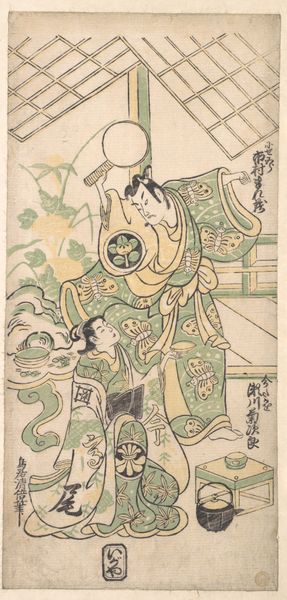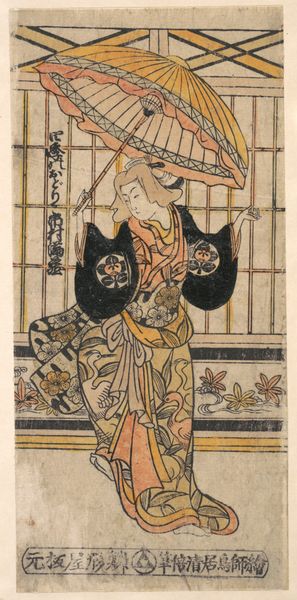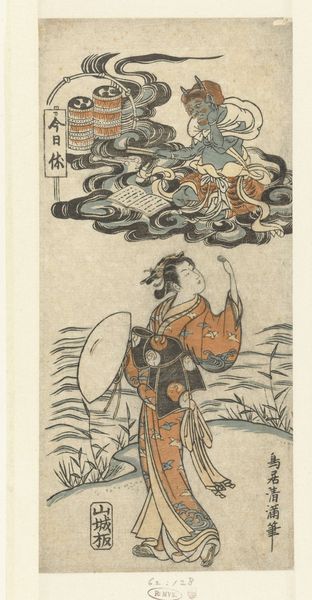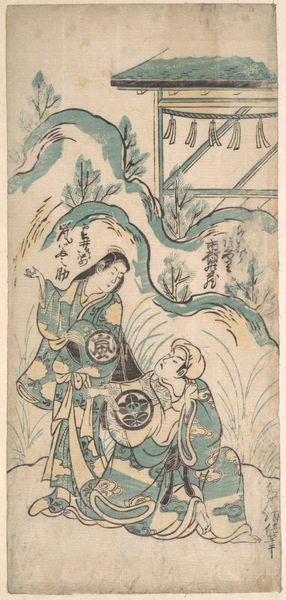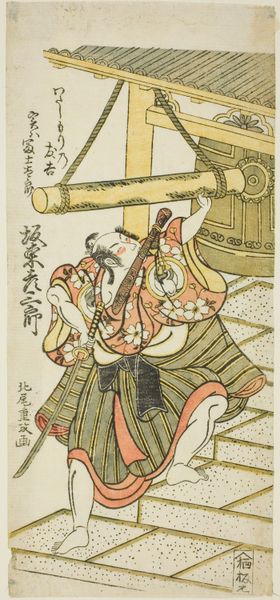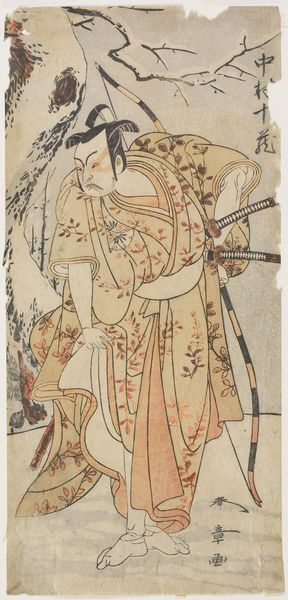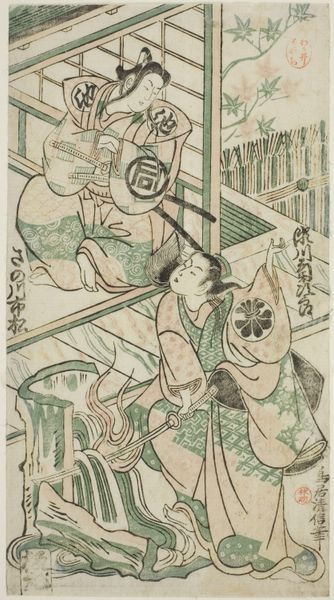
print, woodblock-print
#
portrait
# print
#
asian-art
#
ukiyo-e
#
japan
#
figuration
#
woodblock-print
Dimensions: 12 5/16 × 5 11/16 in. (31.3 × 14.5 cm) (image, sheet, hosoban)
Copyright: Public Domain
Editor: Here we have a striking woodblock print, "Actor Ōtani Hiroji as Tsuneyo," created around 1740 by Torii Kiyonobu II. It's from the Ukiyo-e tradition and I'm immediately drawn to the stylized depiction of the actor and the almost dreamlike quality of the scene. How do you read this print, particularly within the social context of its time? Curator: It's interesting that you call it dreamlike. I see this piece functioning as a crucial form of advertisement within the burgeoning entertainment culture of Edo-period Japan. Think about it: kabuki actors were the celebrities of their day. These prints, widely distributed, shaped public perception and solidified the actor's brand. Notice the actor's distinctive pose – it's deliberately theatrical. Editor: That makes sense. So, these weren't just artworks, but tools for creating a star image? Were these prints widely accessible? Curator: Exactly. These prints were relatively affordable, aimed at a broad audience, fueling a culture of fandom and shaping taste. This piece gives us access to how fame and popularity was created back then. Consider how the theater owners might have promoted these images. Editor: The idea of art as advertisement really reframes how I see this. I was focused on aesthetics, but understanding its societal function adds a whole other dimension. I will be taking a different perspective of these prints moving forward. Curator: That shift in perspective, recognizing art's role in shaping society, is the key. These images were much more than decorative. The scale of this imagery demonstrates a significant cultural moment for Japanese Art History.

